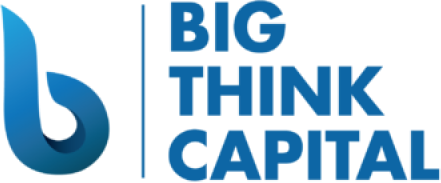Discover the Top 10 Business Lenders for Your Small Business in 2025
Estimated reading time: 6 minutes
- Understand your funding options in 2025.
- Check eligibility factors like credit score and annual revenue.
- Know the common pitfalls in the lending process.
- Utilize expert resources for better financing decisions.
Table of Contents
- What Business Lending Means for Small Businesses in 2025
- Eligibility and Decision Factors Owners Face
- Overview of Funding Options
- Evaluating Costs, Terms, and Tradeoffs
- Common Pitfalls and How to Avoid Them
- Implementation Checklist
- Actionable Takeaways
- How Big Think Capital Can Help
- Get Your Funding Questions Answered Today
- References
What Business Lending Means for Small Businesses in 2025
With the landscape of small business financing constantly evolving, understanding your options for funding in 2025 is more crucial than ever. Business owners are faced with various challenges, including rising interest rates and stricter underwriting guidelines. Whether you are looking for a loan for small business operations or seeking to improve cash flow through business loans, this guide will illuminate the top 10 lenders and provide actionable insights to empower your financing decisions.
As of 2025, access to capital is essential for small businesses navigating a competitive market. SBA loans, equipment financing, and merchant cash advances are just a glimpse into the financing options available. Understanding these different funding avenues can help you identify which lender may best suit your unique needs.
Eligibility and Decision Factors Owners Face
When considering a loan for small business needs, several factors come into play:
- Credit Score: Lenders often use credit scores as a primary criterion for eligibility. A higher score can open doors to better terms.
- Time in Business: Many lenders prefer businesses that have been operational for at least two years, demonstrating stability.
- Annual Revenue: Your business’s income can influence the amount you are eligible to borrow.
- Debt-to-Income Ratio: Lenders will assess your existing debt compared to your income to gauge your ability to take on additional loans.
Overview of Funding Options
Understanding your funding options can streamline your decision-making process. Here’s a breakdown of some primary loan types and leading lenders:
- SBA Loans: These loans are backed by the Small Business Administration and typically offer lower interest rates. They might take longer to process but come with favorable terms. Top lenders include Wells Fargo and Live Oak Bank.
- Equipment Financing: Ideal for businesses needing to purchase new equipment, lenders offer loans based on the equipment’s value. Notable lenders in this category are Bank of America and Fleet Farm Credit.
- Merchant Cash Advances (MCA): This option provides quick access to cash but can come with higher fees. Leading providers include Can Capital and PayPal Working Capital.
- Lines of Credit: Flexible borrowing options that allow businesses to draw funds as needed. Prominent lenders include American Express and BlueVine.
Evaluating Costs, Terms, and Tradeoffs
When choosing a lender, evaluating costs and terms requires careful attention. Here are essential points to consider:
- Interest Rates: Always compare rates among different lenders. Note that higher risk typically leads to higher rates.
- Fees: Application fees, origination fees, and prepayment penalties can all impact the overall cost of your loan.
- Repayment Terms: Assess how long you will have to repay the loan and what the monthly payments will be. Longer terms often mean lower payments but could lead to higher interest costs.
Common Pitfalls and How to Avoid Them
Business owners should be aware of potential pitfalls in the lending process:
- Not Reading the Fine Print: Always thoroughly review loan agreements to understand the obligations.
- Ignoring Total Cost of Borrowing: Focus on the total amount you will repay, not just the monthly payment.
- Rushing the Decision: Take your time to research lenders and funding options; this can prevent costly mistakes.
Implementation Checklist
Once you’ve identified a lender, follow this checklist to ensure you’re prepared:
- Gather necessary financial documents, including tax returns and bank statements.
- Understand your credit score and improve it if necessary before applying.
- Evaluate your business plan to justify the loan’s purpose and projected ROI.
- Consult with financial professionals if unsure about the terms.
Actionable Takeaways
- Analyze your business’s financial health regularly to determine the most suitable funding option.
- Develop multiple lender relationships to enhance your access to capital.
- Stay informed about market trends affecting interest rates and lending availability.
How Big Think Capital Can Help
At Big Think Capital, we understand the complexities of securing financing for your business needs. Our team of experts is committed to simplifying the lending process, allowing you to focus on growing your business. Whether you’re considering SBA loans, equipment financing, or alternative options, we can guide you toward the best solution.
Get Your Funding Questions Answered Today
If you’re ready to explore your financing options, we invite you to learn more at bigthinkcapital.com. Our funding experts are available to discuss your specific needs and help you secure the best loan for your small business.
This article is for educational purposes only and does not constitute legal, tax, or investment advice.
References
- SBA 7(a) Loan Program Overview (U.S. Small Business Administration, 2025)
- Consumer Credit – G.19 (Federal Reserve, 2025)
- Small Business Credit Survey (National Federation of Independent Business, 2025)
- Commercial Lending – What You Need to Know (Fican, 2025)






